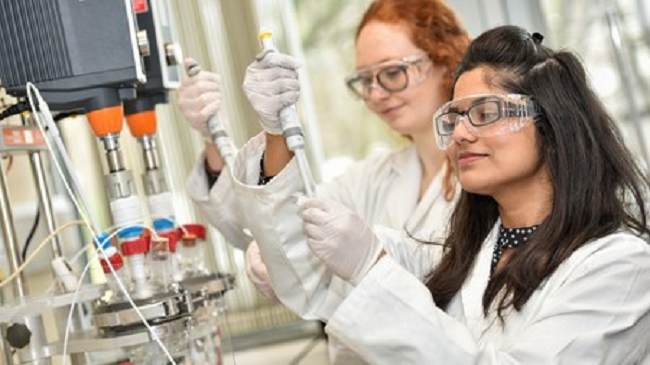Hydrogen ‘bank’ could see production advantage for Scotland

Scientists at the University of Aberdeen are developing technology that will enable electricity generated by renewables to be ‘banked’ as green hydrogen in depleted oil and gas reservoirs alongside industrial carbon emissions.
The research could play a key role in helping Scotland achieve its net zero ambitions and even become a net exporter of hydrogen, while providing a new lease of life to depleted oil and gas reservoirs and aquifers, as well as the pipeline and well infrastructure surrounding them.
It could also reduce constraint payments made to windfarm operators to stop generating electricity when production is too high, by allowing the excess electricity to be converted to green hydrogen and stored for use elsewhere. A recent independent report to the UK Government has highlighted issues around the ability of the National Grid to cope with increased power generation as more renewables projects come on stream, underlining the potential benefits of the current research in easing pressure on the grid. Furthermore, the Scottish Government-funded Hydrogen Backbone Link project has underlined the important role that hydrogen could play in Scotland’s ambitions to become a net exporter of green energy.
Dr Prashant Jadhawar from the University’s School of Engineering is leading the projects which have received support from the Net Zero Technology Centre’s (NZTC) Net Zero R&D Programme which is funded by the Scottish Government, Scottish Funding Council and Scottish Enterprise, and is backed by a range of industrial partners including a number of UKCS North Sea Operators, Scottish Gas Network Plc, BatiGea Ltd., UK Elixir consultants Ltd., UK, and Flow Expertise Ltd., UK.
Dr Jadhawar presented his research at the Offshore Europe conference this week in Aberdeen, during the conference’s Technical Session on Hydrogen Challenges.
The first phase of these projects which is already underway uses a combination of modelling, simulation and laboratory experimentation to evaluate the most effective means of transporting hydrogen through the onshore and offshore North Sea pipeline network, with the aim of developing digital tools that will enable transportation to homes and businesses.
It is also investigating the co-storage of hydrogen and carbon dioxide in depleted hydrocarbon reservoirs and aquifers, with CO2 acting as a ‘cushion’ gas. This technique has never been attempted before but could be used to store blue hydrogen and the associated CO2 at a large scale.
More information here


